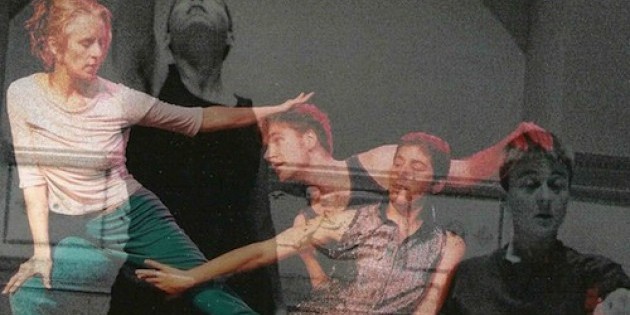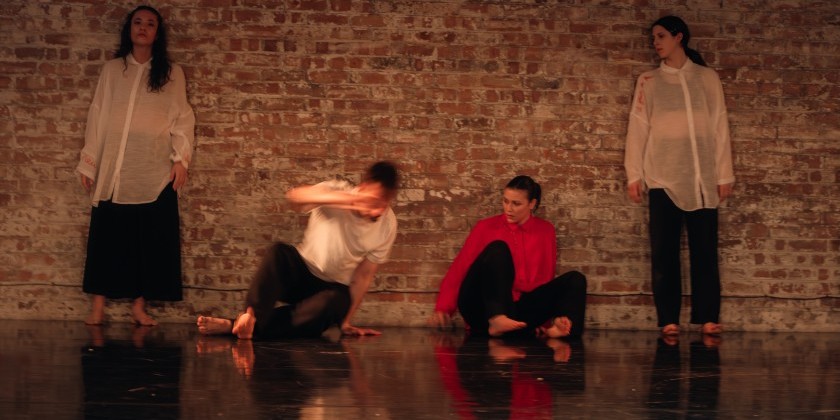The Dance Enthusiast Asks K.J. Holmes And Sondra Loring

As Movement Research's Fall Festival Celebrates 20 Years This Year, We Speak to the Curators.
The Dance Enthusiast Asks – K.J. Holmes and Sondra Loring
The Curators of Movement Research’s 20th Anniversary Fall Festival Talk about: beginnings, improv, choreography, presence, transformation, and all sorts of artsy things you discover after 20 years.
K.J. Holmes: I went to a workshop in Vermont where I was turned on to different release techniques, contact improvisation and vocal improvisations.I was living in NY at the time and I was told that(Movement Research) was the place to go and take classes--that was in 1981. There were lots of teachers, understanding through language. Teaching gives us a chance to articulate, using words, to bring people into a non-verbal expression. There were people teaching theater, voice works—(teaching) ways to access different parts of themselves. This is what drew me. It wasn’t just a form I was wearing. I was pushing out into a mystery of dance.I was a student for many years then started teaching in 1986. I was artist in residence in 1991 or ’93,something like that.
 |
| Photos: K.J. Holmes by Enid Farber and Sondra Loring-by Anja Hitzenberger |
C: When you have a long career, it’s hard to keep track.
K.J.: I think it’s like 30 years of this work, actually. So, 30 years with Movement Research. Right now, I am working as a performing artist with a choreographer where it is about setting material.(I am working on) how to bring the kind of trust in oneself that this (improv) work brings, to set material. How to bring a fullness of expression into something that is already designed.
C: What attracted you to Movement Research, Sondra?
"Dance is such a beautiful thing. It keeps revealing parts of myself and myself in relation to the world-- back and forth. It is limitless…endless…very exciting and a little comforting, because I don’t have to worry that I am going to use it up. It’s always always there, as long as I show up."
-Sondra Loring.
S: and for me, I really need KJ there because I can’t have ideas unless I have anotherperson around.So, to me, it’s like the collective, of course, did it. But the words I had been working with in my own work, so now there’s a place to put them.
C: I noticed one of the festival workshops is dedicated to PRESENCE? What is presence to you?
S: Its mysterious for me. Although, there are definite paths into, and tools, skills –getting more skillful at being able to look inward and express and articulate what is occurring. And a lot of letting go. A lot of being present is being courageous and vulnerable, in that moment, and letting go.
K.J.: We are trying to be in a mystery, rather than showing, “There’s this answer and that’s what we’re trying to share." How do you live in a mystery and allow yourself to be present with what comes up in that?
C: It seems your sharing the questions? And living in them?
K.J.: Yah.
S: To put it into a different discipline perhaps, when you are drawing as an artist on paper, the drawing starts to talk back to the pen in your hand -- and when you’re moving, your moving and the movement talks back to you. You are changed. You have to (be) if you are alive.There’s that beautiful point of transformation.
K.J.: It’s a big lesson in impermanence. We are looking to transform through some sense, realizing that nothing is fixed. Dance is a really amazing world to enter into to experience that. As much as we try to nail anything down, things are gonna change.
S: Dance is such a beautiful thing. It keeps revealing parts of myself and myself in relation to the world-- back and forth. It is limitless…endless…very exciting and a little comforting, because I don’t have to worry that I am going to use it up. It’s always always there, as long as I show up.
S: Definitely. We wanted to have a place where improvisation could be celebrated. Twenty years ago it was a bit of a different landscape in the downtown dance world. There was a little more separation between choreographer and choreographed, and improvisation and improviser. A group of people wanted to come together and work together for short amount of time -a week or something- and then present what they did to the public.So we organized the venues and the way to do that and then it changed radically after the 1st year-- because of the giant egos that existed (laughing).People wanted to do their own work and have it be seen and not be like a group of 18 people trying to work together. That was very ambitious.














